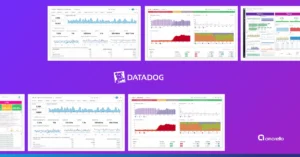Bewilderment, concern and economic losses were unleashed on July 19, 2024, when a failed update to the CrowdStrike security platform triggered global technological chaos. The integration of CrowdStrike with key products from Microsoft products caused a domino effect, disrupting essential services such as. Microsoft 365, Azure, Teams and OutlookThe CrowdStrike, raising the alarm about enterprise resilience to technology failures.
The impact was devastating and multi-sectoral:
- Airports paralyzed: Airlines around the world were affected with more than 29,000 flights delayed and 3,000 cancellations.
- Disrupted financial operations: The financial sector reeled from the disruption of trading platforms and online financial services, putting transactions at risk and generating uncertainty in the markets.
- Government agencies affected: The paralysis of digital systems and services in the public sector hindered procedures, citizen services and essential government operations.
This incident highlights the vulnerability of companies that rely on external technology services. How can we protect our businesses from future failures?
You may be interested in: Digital Transformation 2024: trends, challenges and opportunities with GoogleCloud
Microsoft’s failure reminds us that no one is safe from technology disruptions, and how critical it is to strengthen business resilience to technology failures.
At Amarello, we understand that technology failures are inevitable, but they don’t have to be catastrophic. Our guide equips you with disaster recovery(DRP) strategies and proactive measures to shield your business from events like the recent Microsoft event. Learn how to minimize damage, ensure operational continuity and keep your business safe in the unpredictable digital world.
Technology Resilience: Anticipate and prepare for failures
“The best victory is to win without fighting,” said Sun Tzu in The Art of War. In today’s business world, this wisdom translates into proactive preparation for possible technological failures, the first step to strengthen business resilience to technological failures in your business is prevention. That is why we recommend you consider:
- Incident response plan: A detailed manual that will guide your actions in the event of a crisis, defining specific roles, responsibilities and procedures.
- Data backup and recovery: Protect your most valuable information with regular, up-to-date backups and a robust recovery plan, ensuring the continuity of your operations.
- Threat monitoring and detection: Implement constant surveillance systems to identify and neutralize potential attacks or failures before they can wreak havoc.
- Penetration tests and drills:Periodically evaluate the resistance of your systems to possible attacks through controlled drills, which will allow you to identify vulnerabilities and optimize your response capacity.
- Effective communication: Establish clear, transparent communication channels and alternatives to keep your customers, employees and stakeholders informed during a crisis to reduce the impact on your reputation.
Technology crisis management: Strategies for staying calm and taking action
“Sometimes the most productive thing you can do is relax,” reflected Mark Black. In the midst of a crisis, calm and strategic action are your best allies to prevent havoc from escalating beyond your control. Remember to act with these key actions in mind:
- Clear and transparent communication: Inform your customers and stakeholders about the situation in a timely, honest and empathetic manner. Provide regular and realistic updates, avoiding speculation and rumors that may damage your reputation. Remain calm and convey confidence in your ability to resolve the situation.
- Minimize impact: Activate your contingency plan and execute workarounds to keep your operations running. Redirect traffic to backup systems, use third-party services or implement temporary solutions to minimize interruptions and maintain productivity. Remember at Amarello we have different options to support you in this step, such as our solutions supported by Veeam.
- Prioritize security: Reinforce the protection of your data and systems during the outage. Avoid actions that could compromise security and increase the risk of further damage, such as accessing sensitive information from unsecured networks. Stay calm and make informed decisions to protect your most valuable assets.
- Investigation and analysis: Once the situation is under control, take the time to conduct a thorough analysis and determine the root cause of the failure. Use this information to take corrective action and strengthen your systems, preventing future incidents and ensuring business continuity.
Business resilience in action learn how to strengthen your business after a technology failure
“In the midst of chaos, there is also opportunity,” said Sun Tzu. After a technological failure, it is crucial to analyze what happened to strengthen your business and prevent future incidents. Do the following:
- Analysis and lessons learned: Thoroughly and critically examine your incident response, identifying areas for improvement and optimizing your incident response plan to prevent future disruptions and minimize the impact on your operations.
- Final communication: Communicate to your customers and stakeholders not only the resolution of the failure and the preventive measures implemented, but also the actions taken to mitigate the direct effects, demonstrating transparency and commitment to their satisfaction.
- Security improvements: Implement the improvements identified during the investigation to strengthen your systems and shield your business from future threats.
- Testing and drills: Conduct additional tests and drills to validate the effectiveness of your disaster recovery plan (DRP) and ensure that your team is prepared to respond quickly and efficiently to any eventuality.
Are you dependent on Microsoft? Diversify and strengthen your business resilience to technology failures
In addition to general measures, the truth is that no company can afford to be technologically dependent on a single company, so it is necessary to consider specific actions to avoid falling as collateral damage in the failures of technological giants.
- Evaluate alternatives: Explore other options in the market to reduce your dependence on a single vendor and ensure business continuity, even if a technology giant fails.
- Diversify providers: Distribute your technology services among several providers to minimize the impact of a failure in a single provider and ensure the availability of your systems. Our experts can help you find reliable and flexible solutions to your needs with the support and confidence of Google Cloud.
- Implement specific backup and recovery solutions: Protect your Microsoft data with specialized solutions that guarantee its availability and recovery in case of failure, avoiding irreparable losses. Schedule a specialized consultation with our experts to learn about solutions tailored to your business.
Read also: Big Data: The best ally to know what is happening in your business
Technology resilience is not a luxury, but a business imperative. Cyber security is a constant battle that requires vigilance and continuous adaptation. Be sure to regularly review and update your incident response plans and security measures to stay ahead of emerging threats.
Are you ready to strengthen the resilience of your business and protect it from future technology failures?
Learning from the mistakes of others is just the first step in preparing for the unexpected. Stay informed about the latest IT trends and best practices in security, resiliency and cutting-edge technology by following Amarello’s social networks.
Don’t let a technology failure take you by surprise! Secure your company’s future in the digital world and join the conversation about business resilience to technology failures in our Webinar: Digital Disasters: The Costly Price of Data Loss.



